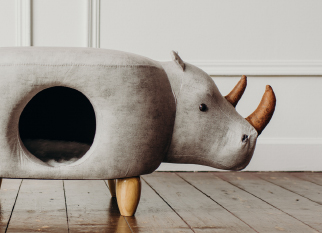Personalization and sustainable development trends of Leather Fabric in the fashion industry
1. Personalization trend: a stage to show unique charm
Personalization is an eternal theme in the fashion industry, and Leather Fabric, with its unique texture and appearance, has become an important carrier for showing personalized design. Designers use innovative craftsmanship and unique design concepts to make leather fabrics into works of art that express personal style and taste.
Material innovation: Traditional leather fabrics are usually smooth, soft or tough, but modern designers are no longer satisfied with these conventional characteristics. They began to explore new ways of material processing, such as embossing, layering, laser engraving, etc., to create leather fabrics with unique textures. These fabrics are not only rich in touch, but also have a strong visual impact, satisfying consumers' pursuit of novel and unique products.
Color and pattern: Color and pattern are important means to show personalization. Designers use bright colors, bold patterns or abstract artistic elements to make leather fabrics into fashionable items with strong visual impact. These items can not only attract consumers' attention, but also become a medium for them to express their personality and attitude.
Cutting and matching: Cutting and matching are the key to showing the personalization of leather fabrics. Designers incorporate leather fabrics into various styles of clothing and accessories through clever tailoring techniques and unique matching methods. Whether it is simple lines, three-dimensional tailoring or rich layering changes, leather fabrics can show different fashion charms and personality characteristics.
Cross-border cooperation: Cross-border cooperation is also an important means to promote the personalized design of leather fabrics. Designers work with artists, musicians, filmmakers and others to integrate their creativity and inspiration into the design of leather fabrics. These cross-border works not only have unique artistic value, but also resonate and attract consumers' attention.
2. Sustainable development trend: the call for environmental protection and responsibility
With the improvement of environmental awareness, sustainable development has become an important issue that cannot be ignored in the fashion industry. As a natural resource-consuming material, the impact of leather fabric production on the environment and animal welfare has attracted much attention. Promoting the sustainable development of leather fabrics has become a common call from the fashion industry and consumers.
Environmentally friendly technology: In order to achieve the sustainable development of leather fabrics, designers have begun to explore the application of environmentally friendly processes. These processes include the use of non-toxic and harmless dyes and auxiliaries, reducing wastewater discharge, and improving resource utilization efficiency. Through the application of these environmentally friendly processes, environmental pollution and resource waste in the production process of leather fabrics can be reduced.
Recycling and reuse: Recycling and reuse are important means to promote the sustainable development of leather fabrics. Designers have begun to explore the recycling of waste leather and convert it into new leather fabrics through regeneration technology. These recycled leather fabrics not only have a texture and appearance similar to traditional leather, but also reduce dependence on new resources and environmental pollution.
Plant-based leather: Plant-based leather is an emerging sustainable leather fabric. It uses natural plant fibers or biomass materials as raw materials and is processed through a specific process. Plant-based leather not only has a texture and appearance similar to traditional leather, but also has better environmental performance and renewability. With the continuous advancement of technology and the reduction of costs, plant-based leather is expected to be more widely used in the fashion industry.
Consumer education: Promoting the sustainable development of leather fabrics requires the active participation and support of consumers. Strengthening consumer education has become an important task in the fashion industry. Designers popularize environmental protection knowledge and sustainable development concepts of leather fabrics to consumers through lectures, exhibitions and other activities. They also indicate environmental protection logos and related information on product design and packaging to guide consumers to choose environmentally friendly and sustainable leather products.




















